Discover the beauty and diversity of Florida’s avian world with this guide to 29 of the most common birds that call the Sunshine State their home.
From the striking Roseate Spoonbill to the mischievous Anhinga, this article offers a glimpse into the fascinating world of Florida’s feathered friends.
Florida attracts over 125 million tourists each year. For birders, the Sunshine State’s more than 500 documented bird species make it one of the most incredible birding destinations in North America.
By narrowing down a must-see bird list with these top Florida birds, birders may plan a visit to Florida without missing any of the state’s specialized species.
These are the common birds in Florida to keep an eye out for.
| Image | Bird | Features | Price |
|---|---|---|---|
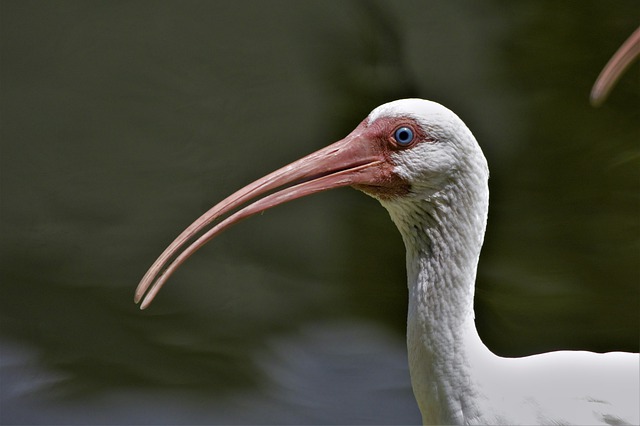 |
| 9.7 | Check Price |
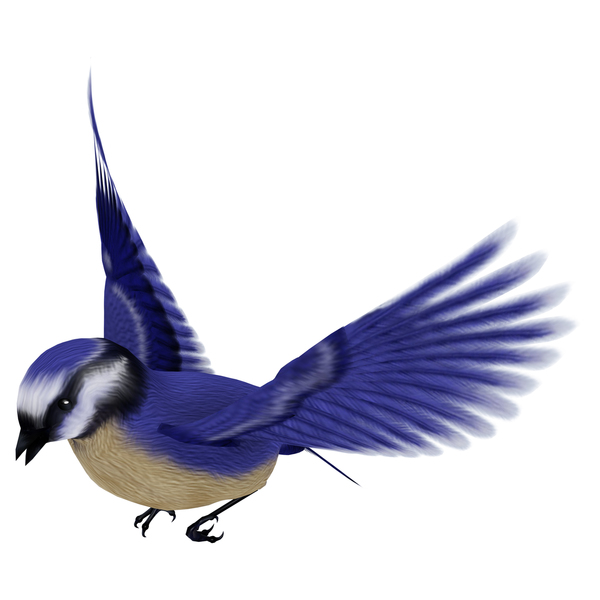 |
| 9.5 | Check Price |
 |
| 9.1 | Check Price |
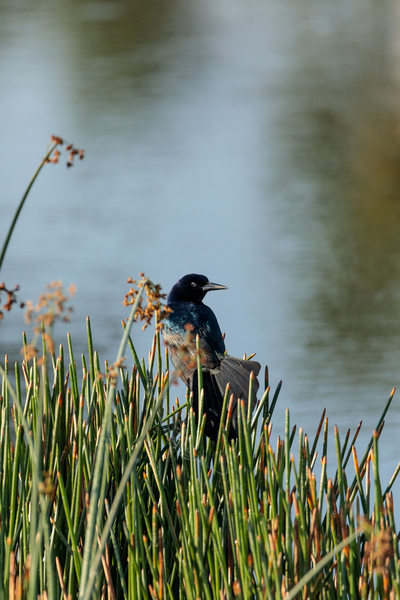 |
| 8.8 | Check Price |
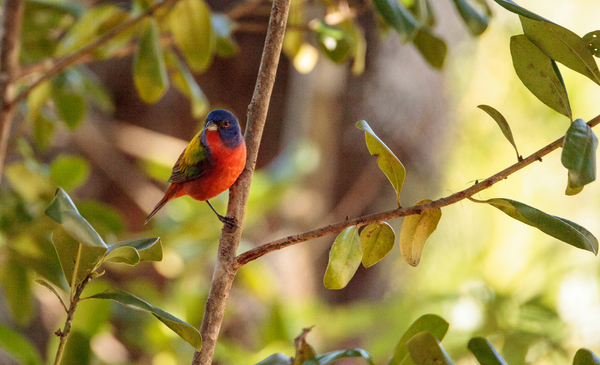 |
| 8.6 | Check Price |
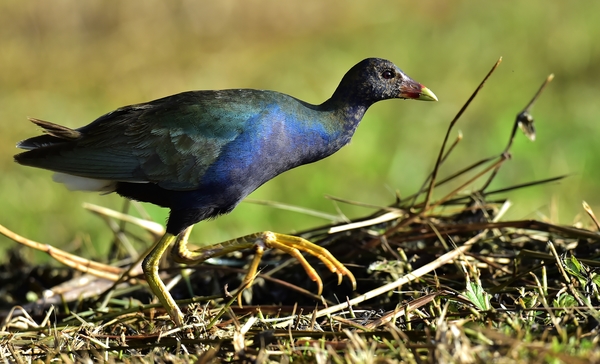 |
| 8.2 | Check Price |
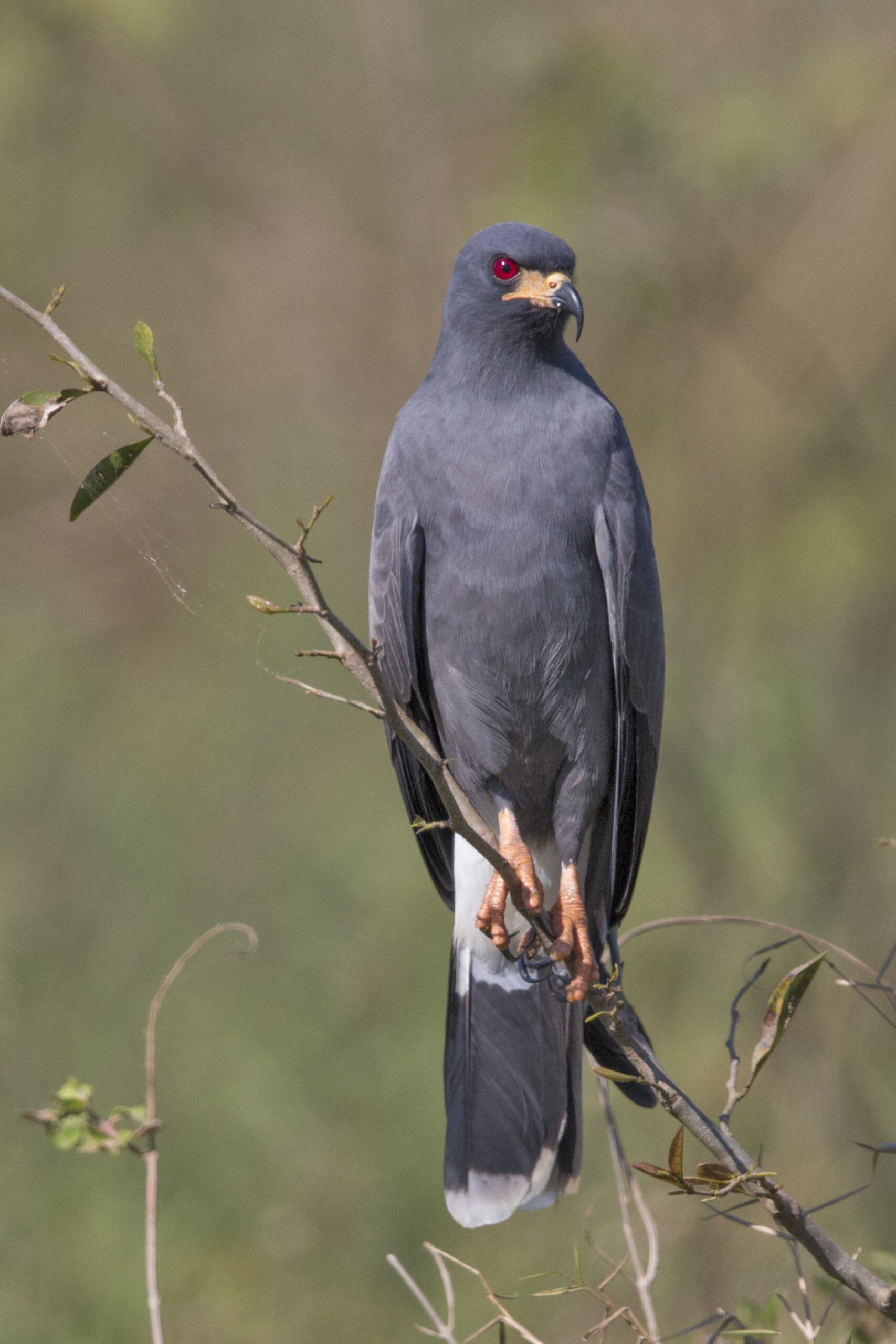 |
| 8 | Check Price |
 |
| 7.7 | Check Price |
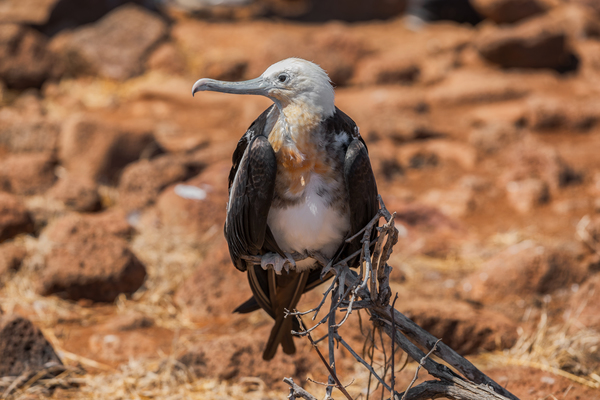 |
| 7.4 | Check Price |
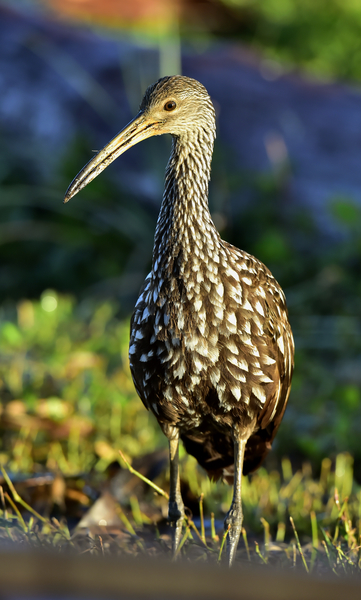 |
| 7.2 | Check Price |
 |
| 9.5 | Check Price |
 |
| 9.5 | Check Price |
 |
| 9.5 | Check Price |
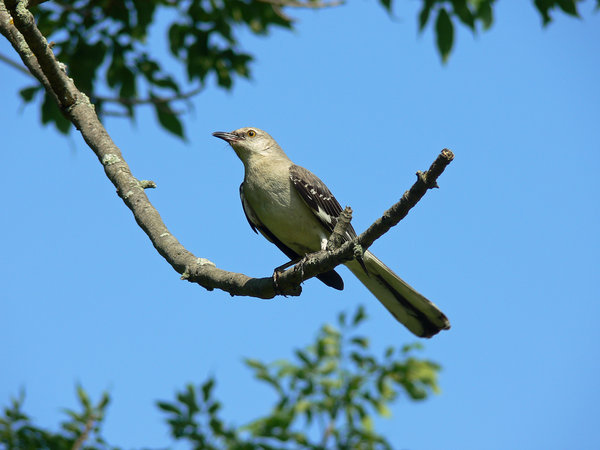 |
| 9.5 | Check Price |
 |
| 9.5 | Check Price |
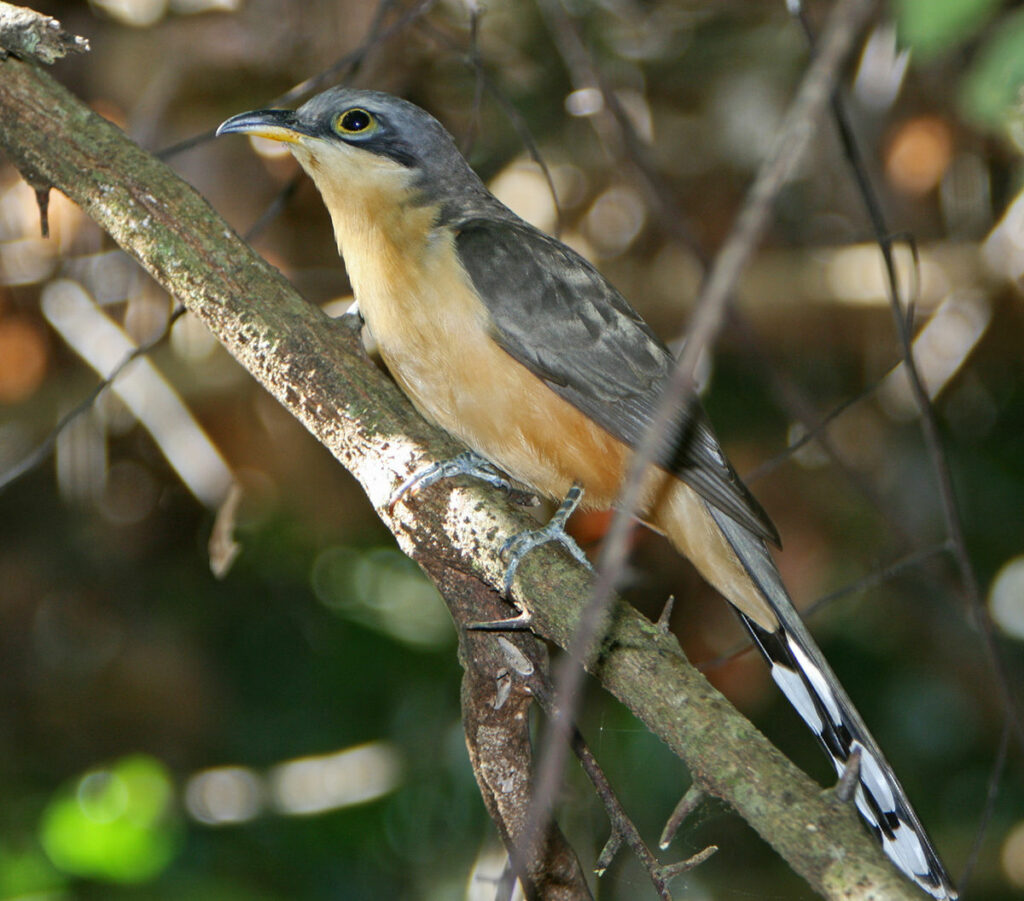 |
| 9.5 | Check Price |
 |
| 9.5 | Check Price |
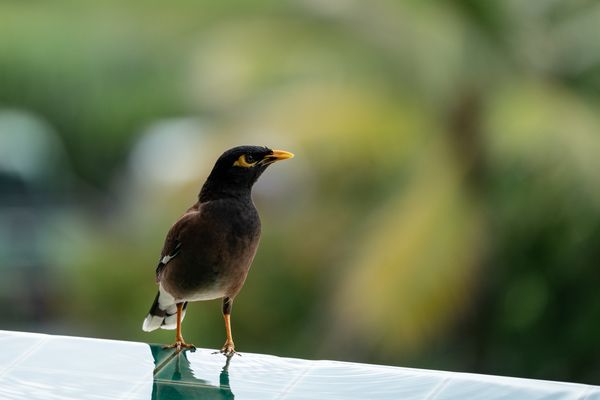 |
| 9.5 | Check Price |
 |
| 9.5 | Check Price |
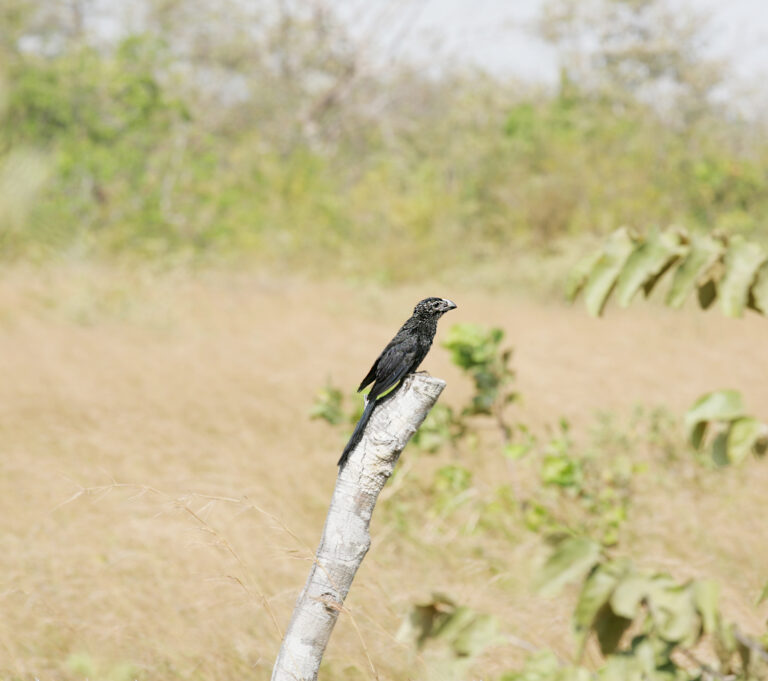 |
| 9.5 | Check Price |
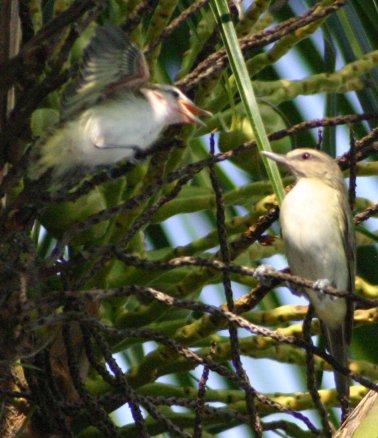 |
| 9.5 | Check Price |
 |
| 9.5 | Check Price |
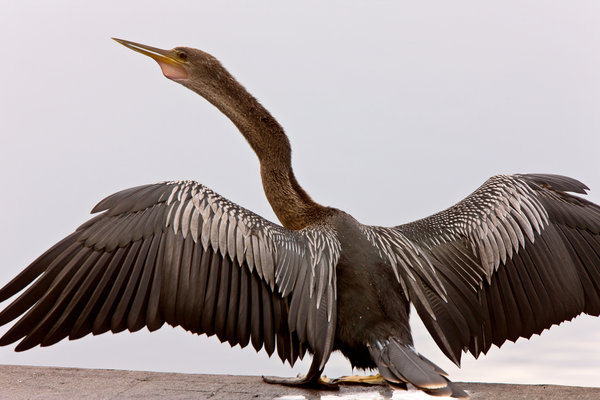 |
| 9.5 | Check Price |
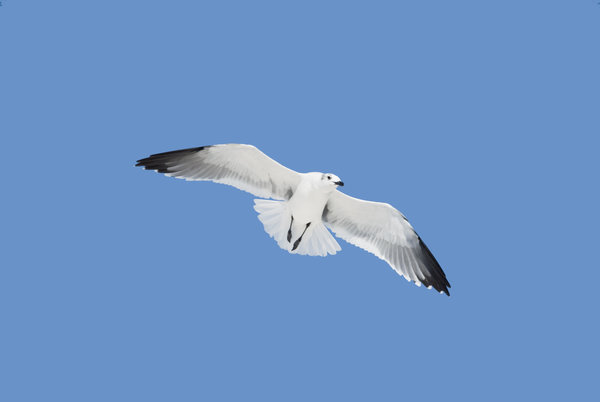 |
| 9.5 | Check Price |
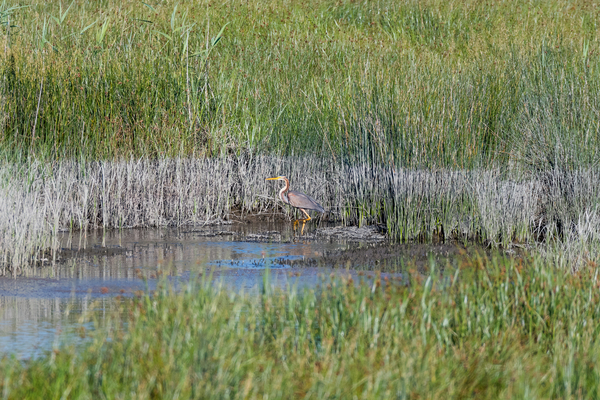 |
| 9.5 | Check Price |
 |
| 9.5 | Check Price |
 |
| 9.5 | Check Price |
 |
| 9.5 | Check Price |
 |
| 9.5 | Check Price |
If you don’t have the time to read the whole article, check out this video for a quick understanding.
Common Birds in Florida
1. White Ibs

Birders who go into Florida’s shallow marshes will be rewarded with a plethora of exciting birds. The white ibis (Eudocimus albus) is one of them.
The White Ibis is a wading bird with a long, curved bill and distinctive white plumage.
It has black wing tips, a red face, and a long neck.
Aside from its distinctive coloring, the white ibis may be identified by its football-shaped body and bent beak, adapted for effective probing after aquatic invertebrates in marshlands.
White ibis birds may be found in Florida at any time of year if you seek them in their natural habitats.
The White Ibis is approximately 24 – 27 inches long. It weighs about 1.5 – 2.5 pounds.
The White Ibis has a wingspan of approximately 40 – 45 inches.
The White Ibis inhabits a variety of wetland habitats, including marshes, swamps, and tidal flats.
The White Ibis feeds primarily on crustaceans, insects, and other small prey items, which it catches with its long, curved bill.
Below are the characteristics of the White Ibs,
| Scientific Name | Eudocimus albus |
| Length | 26 – 28 inches (66 – 71 cm) |
| Weight | 1.5 – 2.5 lbs (0.68 – 1.13 kg) |
| Wingspan | 39 – 41 inches (99 – 104 cm) |
| Habitat | Wetlands, marshes, swamps, and coastal areas |
| Food | Mainly crustaceans, such as crayfish and crabs, as well as insects, small fish, and mollusks |
2. Florida Scrub-Jay

The Florida scrub jay (Aphelocoma coerulescens), as its name suggests, is only found in Florida.
The Florida Scrub-Jay is a medium-sized bird with a blue-gray back, wings, and tail, and a lighter underbelly.
It has a crest of feathers on its head and a distinct white eyebrow.
The Florida Scrub-Jay is approximately 9 – 11 inches long. It weighs about 1.5 – 2.0 ounces.
The Florida Scrub-Jay has a wingspan of approximately 13 – 15 inches.
Outside of reserves and animal refuges, it’s a relatively uncommon sight.
Due to habitat degradation, the number of Florida scrub jays is rapidly declining.
The birds prefer young oak scrub that relies on frequent burning to expand.
Finding a scrub jay in Florida might be difficult. When the jay isn’t feeding on the ground, You may spot it sitting on lofty trees with its distinctive long tail.
The Florida Scrub-Jay feeds on a variety of foods, including insects, seeds, fruits, and small rodents.
It is also known for caching food for later consumption, making it one of the few species of birds known to have a memory for food.
Below are the characteristics of the Florida Scrub-Jay,
| Scientific Name | Aphelocoma coerulescens |
| Length | 8.9 – 9.8 inches |
| Weight | 2.1 – 2.5 ounces |
| Wingspan | 14.2 – 16.5 inches |
| Habitat | Florida scrub |
| Food | Acorns, insects, peanuts |
3. Wood Stork

The giant wood stork (Mycteria americana) found in Florida is one of the finest sites in the United States to observe.
Although it is a permanent inhabitant of the state, you should look for it in the southern marshes, where it spends its time probing for fish and crustaceans.
The Wood Stork is a large wading bird with a long, thick bill and distinct black and white plumage.
It has a dark head, neck, and wings, and a white body and underbelly.
The Wood Stork is approximately 3.3 – 4.3 feet long. It weighs about 4.4 – 8.6 pounds.
The Wood Stork has a wingspan of approximately 5 – 6 feet.
The wood stork is higher than many other marsh birds.
This bird can be seen roosting and breeding on trees above water when it is not eating in the water.
The Wood Stork feeds on a variety of prey, including fish, crustaceans, and amphibians, which it catches with its long, thick bill.
It is known for its distinctive feeding behavior, which involves plunging its bill into the water to capture prey.
Below are the characteristics of the Wood Stork,
| Scientific Name | Mycteria americana |
| Length | 39 – 41 inches |
| Weight | 4.1 – 5.3 pounds |
| Wingspan | 59 – 65 inches |
| Habitat | Wetlands, swamps |
| Food | Fish, crayfish, frogs |
4. Boat-Tailed Tail Grackle

The boat-tailed grackle (Quiscalus major) is another exceptional bird in Florida, with a dense population.
It dwells in raucous flocks and has a shiny blue-black look. Females’ plumage is brown and black.
The Boat-tailed Grackle is a large, iridescent black bird with a distinctive, boat-shaped tail.
It has a long, slightly curved bill and a yellow eye.
The Boat-tailed Grackle is approximately 11 – 14 inches long. It weighs about 3.0 – 5.0 ounces.
The Boat-tailed Grackle has a wingspan of approximately 17 – 20 inches.
They are frequently spotted in urban areas scavenging rubbish with their pointed bills.
These birds prefer marshy environments but can be found in a variety of locations throughout Florida.
Birds tend to move confidently with their tails cocked up.
The Boat-tailed Grackle is a common bird of the southeastern United States, found in a variety of habitats, including coastal marshes, swamps, and suburban areas.
he Boat-tailed Grackle feeds on a wide variety of foods, including insects, seeds, fruits, and human-provided food, such as bread and pet food.
It is known for its ability to adapt to a variety of food sources, making it a successful and widespread species.
Below are the characteristics of the Boat-Tailed Tail Grackle,
| Scientific Name | Quiscalus major |
| Length | 12.2 inches (31 cm) |
| Weight | 3.5 ounces (100 g) |
| Wingspan | 19.7 inches (50 cm) |
| Habitat | Marshes, swamps, agricultural fields, and urban areas |
| Food | Invertebrates, seeds, grains, fruits, and garbage |
5. Painted Bunting

The painted bunting (Passerina ciris) is another bright bird to keep an eye out for in Florida, even though it’s more common in Texas and other parts of Mexico.
In Florida, the best time to see a painted bunting is during the winter months in the state’s southern regions. Central Florida is home to migrating birds.
The painted bunting’s main diet is seeds, and You might draw this bird to feeders.
Males have a distinctive color mix of red, blue, green, and yellow hues, while females have a faint lime-green look.
The Painted Bunting is approximately 4.5 – 5.5 inches long. It weighs about 0.5 – 0.7 ounces.
The Painted Bunting has a wingspan of approximately 7 – 8 inches.
The Painted Bunting feeds on a variety of foods, including seeds, fruits, and insects, which it captures with its short, conical bill.
It is known for its attractive coloration and cheerful song, which makes it a popular bird for birdwatchers and bird enthusiasts.
The Painted Bunting is found in a variety of habitats, including woodlands, edges, and clearings.
Below are the characteristics of the Painted Bunting,
| Scientific Name | Passerina ciris |
| Length | 5.5 inches (14 cm) |
| Weight | 0.7 ounces (20 g) |
| Wingspan | 7.9 inches (20 cm) |
| Habitat | Open woodlands, scrub, and gardens |
| Food | Seeds, insects, and fruit |
6. Purple Gallinule

The purple gallinule (Porphyrio martinicus) is a must-see for birders who like looking for brightly colored species.
It’s a year-round inhabitant of Florida’s freshwater marshes, but it is distributed in an irregular pattern throughout the state.
Although you may have to look for it, You can find it in the most appropriate environments because it blends remarkably well with thick vegetation.
The bright purple plumage of the gallinule is wonderfully complemented by a bold red beak and iridescent green-blue spots.
The bird’s long golden legs, which are used to delicately walk on floating plants, can also be used to identify it.
The Purple Gallinule is approximately 11 – 13 inches long. It weighs about 7.0 – 9.0 ounces.
The Purple Gallinule has a wingspan of approximately 17 – 19 inches.
The Purple Gallinule feeds on a variety of foods, including seeds, insects, snails, and other invertebrates.
It is known for its distinctive feeding behavior, which involves diving and swimming in the water to catch prey.
Below are the characteristics of the Purple Gallinule,
| Scientific Name | Porphyrio martinicus |
| Length | 15.8 inches (40 cm) |
| Weight | 8.8 ounces (250 g) |
| Wingspan | 25.6 inches (65 cm) |
| Habitat | Marshes, swamps, ponds, and lakes |
| Food | Aquatic plants, seeds, insects, and crustaceans |
7. Snail Kite
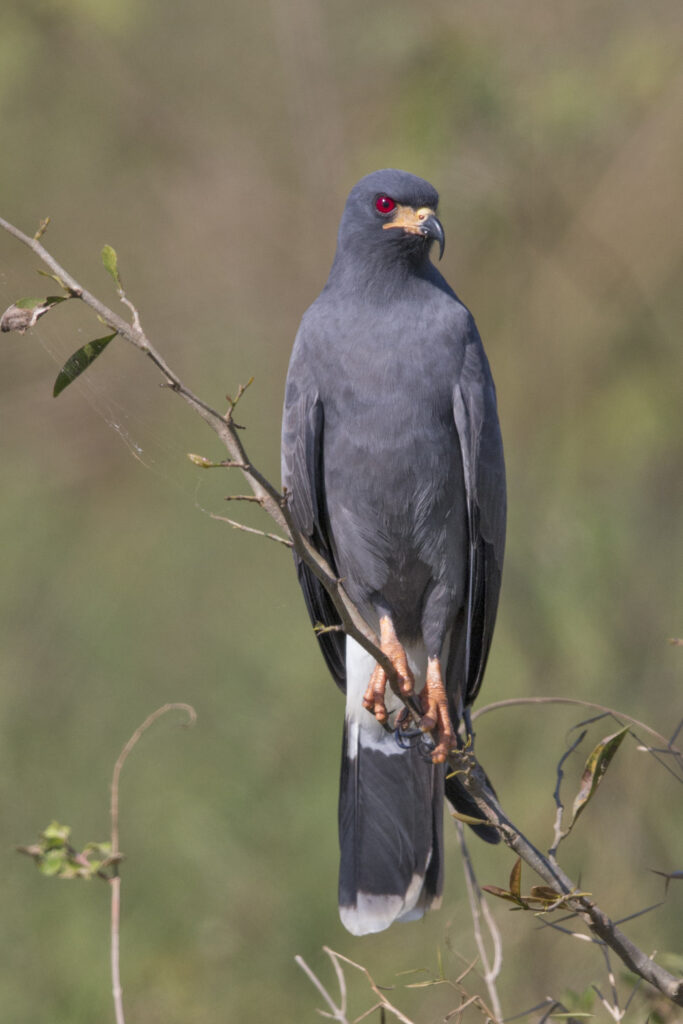
Snail kites (Rostrhamus sociabilis) are elegant raptors native to Central and South America.
The bird’s range extends to Florida, but it’s a very uncommon sighting there.
It may be identified by its sharply curved beak, which is used to pry snails from their shells.
The snail kite’s dark grey plumage and relatively high-flying activity make it easier to spot.
Look for this rare raptor in Florida’s suitable wetlands.
This species like to roost in groups with other aquatic birds and is frequently seen doing so.
The Snail Kite is approximately 16 – 20 inches long. It weighs about 10 – 15 ounces.
The Snail Kite has a wingspan of approximately 3 – 4 feet.
The Snail Kite inhabits a variety of wetlands, including marshes, swamps, and rivers.
The Snail Kite feeds primarily on snails, which it plucks from vegetation or the water surface.
It has a highly specialized bill, which is adapted for extracting snails from their shells.
The Snail Kite is an important indicator species, as its presence and population trends can provide information about the health of wetland habitats.
Below are the characteristics of the Snail Kite,
| Scientific Name | Rostrhamus sociabilis |
| Length | 42 – 46 cm |
| Weight | 250 – 400 g |
| Wingspan | 95 – 100 cm |
| Habitat | Wetlands, marshes, and swamps in the Americas |
| Food | Primarily feeds on Apple, Snails |
8. Roseate Spoonbill

A visit to Florida’s coast would be incomplete without witnessing the colorful roseate spoonbill (Ajaia ajaja).
This quirky and colorful bird stands out in shallow fresh or saltwater because of its wacky and bright look.
The Roseate Spoonbill is a large, pink bird with a distinctive spoon-shaped bill.
It has a long neck, a white head and neck, and black legs and feet.
They have a spoon-shaped beak that allows them to capture crustaceans and fish easily.
The Roseate Spoonbill is approximately 29 – 34 inches long. It weighs about 2.5 – 3.5 pounds.
The Roseate Spoonbill has a wingspan of approximately 3 – 4 feet.
In Florida, you can see groups of roseate spoonbills with ibises and egrets all year.
Its distinctive horizontal position when foraging makes it easier to spot from afar.
The Roseate Spoonbill inhabits a variety of wetlands, including marshes, swamps, and estuaries.
The Roseate Spoonbill feeds primarily on small fish and invertebrates, which it strains from the water using its unique bill.
Below are the characteristics of the Roseate Spoonbill,
| Scientific Name | Platalea ajaja |
| Length | 30 – 36 inches (76 – 91 cm) |
| Weight | 2.2 – 3.5 lbs (1 – 1.6 kg) |
| Wingspan | 45 – 52 inches (114 – 132 cm) |
| Habitat | Saltwater marshes, mangrove swamps, and lagoons |
| Food | Small fish, crustaceans, and aquatic insects |
9. Magnificent Frigatebird

Magnificent frigatebirds (Fregata magnificens) have a pterodactyl-like form and may be seen soaring quickly along Florida’s coast.
These birds are excellent fliers that would frequently try to steal fish from other birds while in flight.
Male magnificent frigatebirds may be distinguished by a patch of red skin on their necks, in addition to their distinctive all-dark appearance and forked tail.
During the mating season, the red pouch expands, making identification much more accessible.
The white breast patch on females distinguishes them from males.
The Magnificent Frigatebird is approximately 40 – 45 inches long. It weighs about 1.5 – 2.0 pounds.
The Magnificent Frigatebird has a wingspan of approximately 6 – 7 feet.
The Magnificent Frigatebird is a pelagic bird, that spends most of its life far from land.
It breeds on isolated islands and nests in trees or on rocky cliffs.
The Magnificent Frigatebird feeds primarily on fish and squid, which it snatches from the surface of the water.
Below are the characteristics of the Magnificent Frigatebird,
| Scientific Name | Fregata magnificens |
| Length | 33 – 40 inches (84 – 102 cm) |
| Weight | 1.1 – 2.2 lbs (0.5-1 kg) |
| Wingspan | 6.5 – 7.5 ft (2 – 2.3 m) |
| Habitat | Near-shore tropical and subtropical waters |
| Food | Fish, squid, and crustaceans |
10. Limpkin

The limpkin (Aramus guarauna) resembles a gigantic rail and is a permanent inhabitant of Florida.
This is a tropical wetland bird that is generally exclusively spotted in this state when it comes to its US distribution.
It has speckled brown plumage and a large beak, which it uses to consume snails and other aquatic invertebrates.
As a result, finding many snail shells in freshwater wetlands might be a good sign that limpkins are around.
If visual identification is difficult due to thick foliage or low light, listen for the limpkin’s eerie calls.
The Limpkin is approximately 24 – 32 inches long. It weighs about 2.5 – 4.5 pounds.
The Limpkin has a wingspan of approximately 3 – 4 feet.
The Limpkin feeds primarily on freshwater snails, which it extracts from their shells using its specialized bill.
Below are the characteristics of the Limpkin,
| Scientific Name | Aramus guarauna |
| Length | 26 – 30 inches (66 – 76 cm) |
| Weight | 2 – 3 lbs (0.9 – 1.4 kg) |
| Wingspan | 3 – 4 feet |
| Habitat | Freshwater wetlands, swamps, and marshes |
| Food | Snails, mussels, and other mollusks |
11. Gray Kingbird

After spending the winter in the Caribbean, grey kingbirds (Tyrannus dominicensis) come to Florida’s coasts.
Even though it has a small range, this is a breeding species that is relatively common in the state.
The Gray Kingbird is approximately 8 – 9 inches long. It weighs about 1.0 – 1.5 ounces.
The Gray Kingbird has a wingspan of approximately 12 – 13 inches.
The best areas to seek for the bird are pine woods and mangrove marshes.
Gray kingbirds like to nest in the southernmost areas of Florida.
Because of their discreet grey plumage, they are loud birds that may be heard more readily than seen.
The grey kingbird’s black mask is an essential feature that might aid in identification.
The Gray Kingbird feeds on a variety of insects, including bees, wasps, and beetles, which it catches in mid-air or captures from the ground.
Below are the characteristics of the Gray Kingbird,
| Scientific Name | Tyrannus dominicensis |
| Length | 7.5 – 9 inches (19 – 23 cm) |
| Weight | 1 – 1.4 oz (30 – 40 g) |
| Wingspan | 12 – 13.5 inches (30 – 34 cm) |
| Habitat | Subtropical and tropical forests, mangroves, and wetlands |
| Food | Insects, especially flying insects such as beetles and caterpillars |
12. Eastern Towhee

The eastern towhee (Pipilo erythrophthalmus) is a big sparrow found in Florida with a striking black and rusty brown mix.
Its habitat encompasses the whole eastern United States; however, it’s worth traveling to Florida to see the species since it has golden eyes.
The Eastern Towhee is a large, robin-sized bird with a black head, back, and tail, and rusty-red underparts.
It has a distinctive white eye ring, a thick bill, and a furtive, skulking behavior.
The Eastern Towhee is approximately 7 – 9 inches long. It weighs about 1.5 – 2.0 ounces.
The Eastern Towhee has a wingspan of approximately 10 – 12 inches.
It dwells in thick foliage, so finding an eastern towhee may be tricky.
If you’re hunting for it in the proper scrub environment, you’ll be able to hear its cries but have difficulties visualizing it.
The eastern towhees feed on the ground, and it may be a good idea to carefully look through the leaf litter.
The Eastern Towhee feeds on a variety of seeds, fruits, and insects, which it finds by scratching through leaves and soil with its feet.
Below are the characteristics of the Eastern Towhee,
| Scientific Name | Pipilo erythrophthalmus |
| Length | 7 – 8.5 inches (18 – 22 cm) |
| Weight | 1.4 – 1.9 oz (40 – 54 g) |
| Wingspan | 10 – 12 inches (25 – 30 cm) |
| Habitat | Deciduous and mixed woodlands, thickets, and suburban areas |
| Food | Seeds, fruits, and insects |
13. Fulvous Whistling-Duck

With its year-round presence in Florida, the fulvous whistling duck (Dendrocygna bicolor) may be regarded as an essential feature of the state’s avifauna.
This duck has long legs and loves warm freshwater marshes.
The cinnamon-colored underparts of adult birds contrast with the dark bluish legs and beak.
Fulvous whistling ducks prefer to sleep in trees, and they may often be seen in rice fields.
This species is frequently found in flocks with more common ducks, such as black-bellied ducks.
Their vivid pink bill distinguishes them from the former.
The Fulvous Whistling-Duck is approximately 20 – 24 inches long. It weighs about 1.5 – 2.5 pounds.
The Fulvous Whistling-Duck has a wingspan of approximately 27 – 31 inches.
The Fulvous Whistling-Duck inhabits freshwater marshes, lakes, and ponds, as well as agricultural fields and rice paddies.
The Fulvous Whistling-Duck feeds on a variety of plant materials, including seeds, grains, and aquatic vegetation.
Below are the characteristics of the Fulvous Whistling-Duck,
| Scientific Name | Dendrocygna bicolor |
| Length | 19 – 22 inches (48 – 56 cm) |
| Weight | 1.1 – 1.6 lbs (0.5 – 0.7 kg) |
| Wingspan | 3 ft (91 cm) |
| Habitat | Freshwater wetlands, rice paddies, and flooded grasslands |
| Food | Seeds, grains, and aquatic plants |
14. Northern Mockingbird

The Northern Mockingbird (Mimus polyglottos) is the official state bird of Florida, so it’s a lovely sight to see.
Throughout the year, You may find it all across the state. Northern mockingbirds are praised for their unusual demeanor and distinctive singing style.
When visiting feeders, they can be highly aggressive with other birds.
Adult birds have thin grey bodies that appear to be uninteresting. Birders are drawn to the northern Mockingbird because of its distinctive singing abilities.
It will replicate a variety of bird melodies and adhere to a strict singing schedule.
Northern Mockingbird length is 9.4 – 11.0 inches and weight is 2.0 – 2.6 ounces.
The wingspan is 12.6 – 14.2 inches.
Found throughout much of North America in a variety of habitats, including suburban and urban areas, shrubby areas, and open woodland.
They are Omnivorous, eating insects, fruits, and berries.
Below are the characteristics of the Northern Mockingbird,
| Scientific Name | Mimus polyglottos |
| Length | 9.5 – 11 inches (24 – 28 cm) |
| Weight | 2.2 – 2.7 oz (63 – 76 g) |
| Wingspan | 12 – 13 inches (31 – 33 cm) |
| Habitat | Suburban and rural areas, woodlands, scrublands, and deserts |
| Food | Berries, insects, and earthworms |
15. Rufous Hummingbird

Rufous hummingbirds (Selasphorus rufus) are most commonly seen in western North America, although they may also be found in Florida.
This unique hummingbird may be seen in various parts of the state, particularly at specialized feeders.
The Rufus hummingbird is brightly colored in a rusty-orange hue and may be seen in the state throughout the winter, so that’s the ideal time to observe it.
This species’ strong territorial nature has earned it particular notoriety. Larger bird species are frequently chased out from their area.
Rufous Hummingbirds typically measure between 3.5 and 4.3 inches in length.
These birds have very small bodies and weigh between 0.1 and 0.2 ounces, making them one of the smallest bird species in the world.
Their wingspan measures between 4.3 and 5.1 inches.
Rufous Hummingbirds breed in western North America, including Alaska and Canada, in a variety of habitats, such as forests, meadows, and gardens.
During the winter months, they migrate to Mexico and Central America.
Rufous Hummingbirds feed on nectar from flowers, insects, and spiders.
They feed by hovering in front of a flower and using their long beak to access the nectar.
They also feed on insects, especially during the breeding season, when they need a high-protein diet to feed their young.
Below are the characteristics of the Rufous Hummingbird,
| Scientific Name | Selasphorus rufus |
| Length | 3.5 inches (9 cm) |
| Weight | 0.1 – 0.2 oz (3 – 6 g) |
| Wingspan | 4.3 – 4.7 inches (11 – 12 cm) |
| Habitat | Conifer forests, deciduous forests, and deserts |
| Food | Nectar from flowers and small insects and spiders |
16. Mangrove Cuckoo

If you’re looking for tropical birds on Florida’s southern beaches, don’t overlook this species.
The Mangrove Cuckoo (Coccyzus minor) is a species of cuckoo bird found in the Americas.
When it comes to its distribution in the United States, the mangrove cuckoo can only be found in mangrove swamps.
This bird, like other cuckoos, has a covert character and can be difficult to notice. The species resembles yellow-billed cuckoos in appearance.
Listen for the unique ringing calls of a mangrove cuckoo to help you identify it.
Travel to different regions of Florida to increase your chances of spotting this bird.
Exploring coastal hardwood hammocks is highly suggested.
Mangrove Cuckoos are identified by their grayish-brown plumage, with a white belly and distinctive black-and-white striped head and neck.
They have a long tail and a distinctive curved bill.
Mangrove Cuckoos are medium-sized birds, measuring between 12 and 14 inches in length.
They have a relatively lightweight body, weighing between 2 and 3 ounces.
The wingspan of Mangrove Cuckoo measures between 16 and 18 inches.
Mangrove Cuckoos are found in coastal regions of the Americas, specifically in mangrove forests and other coastal wetland habitats.
The Mangrove Cuckoo feeds mainly on insects, spiders, and small vertebrates.
They are also known to feed on fruit and berries.
Below are the characteristics of the Mangrove Cuckoo,
| Scientific Name | Coccyzus minor |
| Length | 11 – 12 inches (28 – 30 cm) |
| Weight | 2.3 – 3.3 oz (65 – 95 g) |
| Wingspan | 16 – 17 inches (41 – 43 cm) |
| Habitat | Mangrove swamps and coastal hammocks |
| Food | Caterpillars, beetles, and other insects |
17. Long-Billed Curlew

The Long-billed Curlew (Numenius americanus) is a large shorebird species found in North America.
The long-billed curlew has been seen in Florida during the winter; however, it is more common in western US areas.
It is the biggest shorebird in North America.
Long-billed Curlews are identified by their long, downward-curving bill, which is longer than their head.
They have brown plumage with streaked underparts, a white head and neck, and long legs.
In flight, they have a distinctive, drooping neck and a long, slender bill.
Long-billed Curlews are large shorebirds, measuring between 20 and 26 inches in length.
They have relatively heavy bodies, weighing between 24 and 40 ounces.
The wingspan of Long-billed Curlews measures between 39 and 44 inches.
It’s the ideal instrument for scavenging coastal areas in quest of food.
Even if you simply see the silhouette of a long-billed curlew, you can tell it apart.
The bird’s elegant profile stands out in its natural environment, yet the cinnamon-washed plumage provides good camouflage power.
Long-billed Curlews feed on crustaceans, mollusks, and insects.
Below are the characteristics of the Long-Billed Curlew,
| Scientific Name | Numenius americanus |
| Length | 20 – 26 inches (51 – 66 cm) |
| Weight | 1.3 – 2.3 lbs (0.6 – 1 kg) |
| Wingspan | 39 – 41 inches (99 – 104 cm) |
| Habitat | Salt marshes, mudflats, and grasslands |
| Food | Crustaceans, mollusks, insects, and other small invertebrates |
18. Common Myna

The Common Myna (Acridotheres tristis) is a species of bird in the starling family found in the Old World.
The common myna, although an Asian bird, has developed very significant colonies in Florida.
In urbanized settings, You might find loud flocks of common myna.
With a combination of black and brown plumage, this is a rather large bird.
The yellow beak and legs are distinguishing characteristics.
Given this bird’s aggressive temperament, it’s not unexpected that it’s been quickly introduced in many regions of the world outside of its natural habitat.
Common Mynas measure between 8.5 and 9.5 inches in length.
They have medium-sized bodies and weigh between 2.2 and 2.9 ounces.
The wingspan of Common Mynas measures between 12 and 14 inches.
Common Mynas feed on a variety of food, including insects, fruit, nectar, and seeds.
They are also known to feed on eggs and nestlings of other birds.
Below are the characteristics of the Common Myna,
| Scientific Name | Acridotheres tristis |
| Length | 9.8 – 11 inches (25 – 28 cm) |
| Weight | 2.5 – 3.5 oz (70 – 100 g) |
| Wingspan | 13 – 14 inches (33 – 36 cm) |
| Habitat | Urban areas, agricultural lands, and open woodlands |
| Food | Grains, fruits, insects, and carrion |
19. Brown Noddy

The Brown Noddy (Anous stolidus) is a seabird species found in the tropical and subtropical oceans of the world.
The brown noddy is a dark-bodied tern found off the coast of Florida.
It isn’t easy to detect from the mainland, but you can improve your chances with the aid of a good spotting scope.
The brown noddy, unlike other terns, does not dive for fish but prefers to catch them on the top of the water.
The white hat stands out against the dark brown body of the bird, making it easier to identify.
Brown noddies can seek shelter farther inland in the event of catastrophic weather events such as hurricanes.
Brown Noddies measure between 12 and 14 inches in length.
They have a lightweight body and weigh between 4 and 6 ounces.
The wingspan of Brown Noddies measures between 26 and 28 inches.
Brown Noddies breed on remote tropical islands and coastal cliffs and forage at sea, where they can be found near schools of fish and other marine mammals.
Brown Noddies feed mainly on small fish and squid, which they catch by diving into the water from the air.
Below are the characteristics of the Brown Noddy,
| Scientific Name | Anous stolidus |
| Length | 11 – 13 inches (28 – 33 cm) |
| Weight | 7.8 – 10.6 oz (220 – 300 g) |
| Wingspan | 29 – 31 inches (74 – 79 cm) |
| Habitat | Tropical and subtropical coastal areas and offshore islands |
| Food | Fish, squid, and crustaceans |
20. Smooth-billed Ani

The Smooth-billed Ani (Crotophaga ani) is a bird species in the cuckoo family found in the Americas.
Smooth-billed Anis are identified by their glossy black plumage, with a distinctive iridescent green sheen on the wings and tail.
They have a long, narrow tail and a large, heavy bill that is smooth to the touch.
Smooth-billed Anis measures between 12 and 13 inches in length.
They have medium-sized bodies and weigh between 2.8 and 3.2 ounces.
The wingspan of Smooth-billed Anis measures between 20 and 22 inches.
Smooth-billed Anis are found in a variety of habitats in the Americas, including tropical forests, savannas, and wetlands.
They are most abundant in areas with dense vegetation, where they can forage insects and other small animals.
Smooth-billed Anis feed mainly on insects and other small invertebrates, as well as some fruit and seeds.
They forage on the ground and in low vegetation, often in flocks.
They are known for their loud calls, which are often given in unison with other birds in the flock.
Below are the characteristics of the Smooth-billed Ani,
| Scientific Name | Crotophaga ani |
| Length | 13 – 14 inches (33 – 36 cm) |
| Weight | 4.4 – 5.3 oz (125 – 150 g) |
| Wingspan | 21 – 23 inches (54 – 59 cm) |
| Habitat | Tropical and subtropical forests, savannas, and wetlands |
| Food | Beetles, grasshoppers, and other insects, as well as small reptiles and amphibians |
21. Black-Whiskered Vireo

The Black-whiskered Vireo (Vireo altiloquus) is a species of songbird native to the Caribbean and South America.
This tropical bird’s range is very much limited to it.
Finding a Black-whiskered vireo may be challenging for birders, and it’s not just because of the environment it prefers.
There’s also the fact that the breeding range of birds in Florida is shrinking.
In terms of identification, the Black-whiskered Vireo is a small bird with a round head, a large eye, and a short, slightly hooked bill.
It has a greenish-yellow back, wings, and tail, and a white underbelly.
The species is named after the distinctive black whiskers that run down the sides of its head and neck.
The average length of the Black-whiskered Vireo is approximately 4.5 inches (11 cm), and it weighs approximately 0.5 ounces (15 g).
The wingspan of the species is approximately 7.5 inches (19 cm).
The ideal time to see this vireo is during the summer.
Look for the bird’s unique head patterns as you walk through the state’s coastline mangrove wetlands.
The diet of the Black-whiskered Vireo mainly consists of insects and spiders, although they also feed on fruit and berries.
Below are the characteristics of the Black-Whiskered Vireo,
| Scientific Name | Vireo altiloquus |
| Length | 5 – 6 inches (13 – 15 cm) |
| Weight | 0.4 – 0.5 oz (11 – 14 g) |
| Wingspan | 7 – 8 inches (18 – 20 cm) |
| Habitat | Mangroves, coastal thickets, and other dense vegetation |
| Food | Spiders, caterpillars, and other insects |
22. Spot-Breasted Oriole

The Spot-breasted Oriole (Icterus pectoralis) is a species of songbird native to Central America and Mexico.
In terms of identification, the Spot-breasted Oriole is a medium-sized bird with a large head and a long, slender bill.
Males have bright yellow heads and bodies, with the characteristic orange spot on their breasts and black streaks on their backs.
Females have a yellow-green head and body with a duller orange breast and a faint streaking on the back.
The average length of the Spot-breasted Oriole is approximately 7.5 inches (19 cm), and it weighs approximately 1.2 ounces (35 g).
The wingspan of the species is approximately 10.5 inches (27 cm).
The urban regions of Miami can provide some decent nesting grounds for this bird, so if you look hard enough, you could find it there.
Aside from the black markings on its breast, the oriole may be distinguished from other orioles in Florida by its bright orange head.
The diet of the Spot-breasted Oriole mainly consists of fruit and nectar, but they also feed on insects, spiders, and small lizards.
Below are the characteristics of the Spot-Breasted Oriole,
| Scientific Name | Icterus pectoralis |
| Length | 7 – 8 inches (18 – 20 cm) |
| Weight | 1.1 – 1.4 oz (31 – 40 g) |
| Wingspan | 11 – 12 inches (28 – 31 cm) |
| Habitat | Tropical and subtropical forests, especially near water sources |
| Food | Nectar, fruits, insects, and spiders |
23. Anhinga

The anhinga (Anhinga anhinga) is a year-round resident of Florida and may be found in many of the state’s marshes and swamps.
The bird prefers regions near water to dry or maintains a warm body temperature by being poised in the sun.
To recognize anhinga birds, look for their snakelike heads in the water.
Males have long tails and black bodies. Their wings have silver spots on them.
The anhinga is a sly water bird that prefers to swim in shallow areas.
The bird may soar reasonably high in the sky under intense late-afternoon heat.
About 3 feet (91 cm) in length, Approximately 2.5 lbs (1.1 kg) in weight, and About 6 feet (183 cm) in wingspan.
Anhingas primarily feed on fish and other aquatic prey.
Below are the characteristics of the Anhinga,
| Scientific Name | Anhinga anhinga |
| Length | 36 – 41 inches (91 – 104 cm) |
| Weight | 3.0 – 4.4 lbs (1.4 – 2.0 kg) |
| Wingspan | 55 – 60 inches (140 – 153 cm) |
| Habitat | Freshwater and saltwater wetlands, swamps, and marshes |
| Food | Fish, reptiles, and amphibians |
24. Laughing Gull

This Laughing Gull (Leucophaeus atricilla) is found in huge numbers along Florida’s coastlines.
It has distinctive cries with a strident quality.
A medium-sized gull with a white head, neck, and underbody, and a black back and wings.
They have a red, black-tipped bill and a red ring around their eye.
Their call is a high-pitched, laughing call that gives them their name.
The black hood and red beak of the laughing gull help you identify it.
It’s also worth searching for white-eye crescents.
Another distinguishing feature is the bird’s mantle, which is significantly darker than that of other gulls.
Only breeding individuals have these distinct characteristics, whereas nonbreeding laughing gulls seem pretty similar to other gulls.
The laughing gull may be spotted all year round on Florida’s beaches.
Below are the characteristics of the Laughing Gull,
| Scientific Name | Leucophaeus atricilla |
| Length | 17 – 20 inches (43 – 51 cm) |
| Weight | 10.6 – 12.3 oz (300 – 350 g) |
| Wingspan | 39 – 44 inches (99 – 112 cm) |
| Habitat | Coastal and inland wetlands, sandy beaches, and marshes |
| Food | Small fish, crustaceans, mollusks, insects, and carrion |
25. Reddish Egret
 The reddish egret is a fascinating heron species to watch for since it is a coastal wader that spends a lot of time on Florida’s beaches.
The reddish egret is a fascinating heron species to watch for since it is a coastal wader that spends a lot of time on Florida’s beaches.
In adults, there are two sorts of morphs. Aside from the dark morph with the distinctive reddish head and breast feathers, specific populations in Florida might be completely white.
Other features, like the shaggy-looking neck, help to distinguish the light morph.
Reddish egrets are foragers who hunt in shallow saltwater. Observing this heron’s unique hunting style is truly a sight.
Check out this article on Types of Herons in Florida.
Below are the characteristics of the Reddish Egret,
| Scientific Name | Egretta rufescens |
| Length | 28 – 36 inches (71 – 91 cm) |
| Weight | 20 – 24 ounces (560 – 680 g) |
| Wingspan | 40 – 50 inches (102 – 127 cm) |
| Habitat | Salt marshes, mudflats, and coastal lagoons |
| Food | Small fish, crustaceans, and insects |
26. Burrowing Owl

This unusual owl loves burrows for roosting and nesting and may be seen all year in Florida.
Burrowing owls may be seen in significant numbers in Florida.
They may be seen throughout the day, which makes them easier to identify than their nocturnal counterparts.
Burrowing owls like to hunt later in the day and can be seen pursuing insects, small rodents, and reptiles.
The bird has a classic owl look with bright yellow eyes and sandy-speckled plumage, making visual identification very simple.
Below are the characteristics of the Burrowing Owl,
| Scientific Name | Athene cunicularia |
| Length | 7 – 10 inches (18 – 25 cm) |
| Weight | 4 – 8 ounces (113 – 226 g) |
| Wingspan | 21 – 24 inches (53 – 61 cm) |
| Habitat | Open grasslands, agricultural lands, and deserts |
| Food | Small mammals, insects, reptiles, and birds |
27. Short-Tailed Hawk

The short-tailed hawk is primarily found in Florida, where it may be seen soaring on thermals high in the sky.
These tiny hawks have dark and light morph kinds, and their distinctive banded tails and broad wings help them stand out.
Because the bird seldom sits perched, observing this short-tailed hawk will need a robust set of binoculars.
When soaring, the raptor preys on smaller birds and is occasionally observed alongside flocks of vultures.
In Florida, the winter season is the best time to see a short-tailed hawk.
Below are the characteristics of the Short-Tailed Hawk,
| Scientific Name | Buteo brachyurus |
| Length | 14 – 16 inches (35 – 41 cm) |
| Weight | 14 – 20 ounces (397 – 567 g) |
| Wingspan | 29 – 35 inches (74 – 89 cm) |
| Habitat | Tropical forests, savannas, and other open habitats |
| Food | Birds, reptiles, mammals, and large insects |
28. Red-Cockaded Woodpecker

You might be able to spot a red-cockaded woodpecker if you travel to Florida’s northern and central areas.
This bird has a wide range in the southeastern United States.
Sadly, due to significant habitat loss due to logging, it’s becoming increasingly scarce.
It’s reasonable to suppose that until you visit a federal preserve, you won’t be able to find it.
The Red-cockaded Woodpecker is a tiny bird with a striped back in black and white.
The woodpecker’s name originates from a red stripe on the male’s cheek that is difficult to notice.
Below are the characteristics of the Red-Cockaded Woodpecker,
| Scientific Name | Leuconotopicus borealis |
| Length | 8 – 9 inches (20 – 23 cm) |
| Weight | 2.0 – 3.0 ounces (57 – 85 g) |
| Wingspan | 13 – 14 inches (33 – 36 cm) |
| Habitat | Pine forests in the southeastern United States |
| Food | mainly insects and spiders, also some fruit and nuts |
29. White-Crowned Pigeon

The white-crowned pigeon is usually found in the Caribbean; however, occasionally spot it in southern Florida.
This is the only site in the United States where you may observe this species.
Because this pigeon-like to dine on fruit, it’s worth looking for it on fig, cocoa plum, and other trees.
White-crowned pigeons have intricately patterned necks and a unique white patch on their heads.
This is a pretty large dark grey pigeon that is difficult to approach due to its timid disposition.
Scanning the sky is frequently a better way to improve your chances of sighting a bird.
If you are interested then check this article on Florida Birds of Prey.
Below are the characteristics of the White-Crowned Pigeon,
| Scientific Name | Patagioenas leucocephala |
| Length | 13 – 16 inches (33 – 41 cm) |
| Weight | 12 – 18 ounces (340 – 510 g) |
| Wingspan | 24 – 28 inches (61 – 71 cm) |
| Habitat | Mangrove forests and coastal woodlands of the Caribbean and Central and South America |
| Food | mainly eats fruits, seeds, and occasionally insects |
Final Words
In conclusion, Florida is a rich and diverse state when it comes to bird life.
With its unique geographical features, such as the Everglades, and its favorable climate, it is not surprising that the state is home to many species of birds.
From the majestic Bald Eagle to the iconic American White Pelican, the 29 common birds in Florida are a testament to the state’s thriving bird life.
Again, these are the Common Birds in Florida:
- White Ibis
- Florida Scrub Jay
- Wood Stork
- Boat-tailed Tail Grackle
- Painted Bunting
- Purple Gallinule
- Snail Kite
- Roseate Spoonbill
- Magnificent Frigatebird
- Limpkin
- Gray Kingbird
- Eastern Towhee
- Fulvous Whistling-Duck
- Northern Mockingbird
- Rufous Hummingbird
- Mangrove Cuckoo
- Long-billed Curlew
- Common Myna
- Brown Noddy
- Smooth-billed Ani
- Black-whiskered Vireo
- Spot-breasted Oriole
- Anhinga
- Laughing Gull
- Reddish Egret
- Burrowing Owl
- Short-tailed Hawk
- Red-cockaded Woodpecker
- White-crowned Pigeon
Whether you’re a seasoned birder or a beginner, the birdwatching opportunities in Florida are endless and are sure to provide a memorable experience for all who venture out to observe them.
So, next time you find yourself in Florida, remember to bring your binoculars and bird guide and enjoy the colorful world of these feathered friends.
FAQ
What is the best time to see common birds in Florida?
The best time to see common birds in Florida is during the spring and fall migration seasons, when many species travel through the state. Winter is also a good time to observe birds, as many species from the north come to Florida to escape the cold weather.
What are some of the most common birds found in Florida?
Some of the most common birds found in Florida include the American White Pelican, Bald Eagle, Wood Stork, Anhinga, and Laughing Gull, among others.
Where can I go to see common birds in Florida?
There are many birding hotspots in Florida, including Everglades National Park, Merritt Island National Wildlife Refuge, J.N. “Ding” Darling National Wildlife Refuge, and the Anhinga Trail, among others.
Are there any special precautions I should take when observing birds in Florida?
Yes, when observing birds in Florida, it is important to remember to keep a safe distance and not disturb the birds or their habitats. It is also important to be mindful of the weather, as extreme heat and humidity can be challenging for both birds and birders.
What equipment do I need to observe birds in Florida?
Basic birdwatching equipment includes a pair of binoculars, a bird guide, and a notebook to record your observations. Some birders also use a spotting scope, tripod, and bird call recordings to enhance their birding experience.
Last Updated on March 22, 2023 by Lily Aldrin

You misidentified a Woodstork, the photo you have is a white ibis.